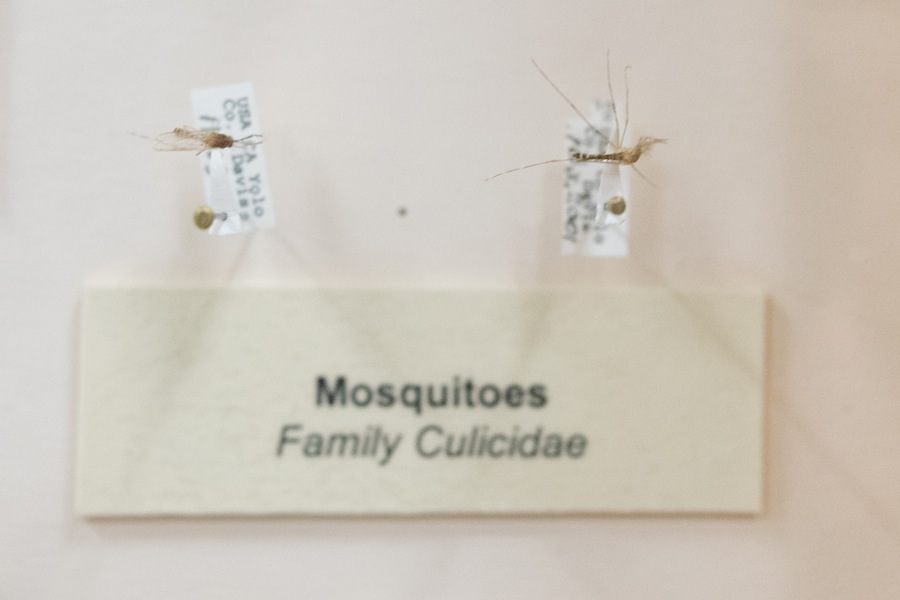
International scientists, health professionals gather to discuss virus
The World Health Organization (WHO) declared the Zika virus a Public Health Emergency of International Concern in February 2016, with numerous cases confirmed around the world. News of outbreaks, specifically in Brazil, have caused concern for where the virus will spread next and how to prevent it.
On May 26, UC Davis molecular and cellular biology and chemical ecologist professor Walter Leal hosted a Zika Public Awareness Symposium. Students in collaboration with Leal made the event possible with the goal of spreading awareness about the Zika virus and how to defend against it.
“Zika had a few moments in the news spotlight and became a real scare for a couple of weeks, but people do not realize how rapidly it is spreading and now much new research is coming out every day,” said third year neurobiology, physiology and behavior major Nepheli Aji in an email interview.
The Zika virus is novel in its transmission, spread both by mosquitos and unprotected sexual intercourse. Common symptoms associated with the virus include skin rashes, headaches, joint pain and fatigue. Severe and rare symptoms include possible neurological effects and death.
“The pathology of this virus has quite different symptoms than other viral infections,”
said Thomas W. Scott, UC Davis entomology professor emeritus. “Symptoms of the infected majority are relatively mild for the most part.”
Scott is an expert in the Aedes Aegypti mosquito that transmits Zika virus. He has studied the mosquitoes for 30 years and explained that this vector is associated with explosive transmission patterns, as seen in areas affected by Zika.
Zika’s varied transmission and range in symptom severity has challenged healthcare professionals and researchers, making it hard to diagnose and track. Zika was first identified in monkeys in 1947, however, it was not considered a threat as there were no major outbreaks. Symptoms were, and to this day, are often confused with other diseases such as Dengue Fever, Yellow Fever and Chikungunya. Leal attributes this continued misidentification as a delay in vaccines and treatment.
“There is an expectation that a vaccine is going to come soon. But it takes time, there must be research done. If we acted on Zika previously, we might have a vaccine today,” Leal said.
Further complicating vaccine and treatment efforts is the nature of high-density populations struck by Zika.
“These mosquitoes typically live in a house with people, lay their eggs near or inside the house, and tend to feed exclusively on humans. In urban settings like many cities in Brazil with large populations, houses do not have screens on windows,” Scott said. “These cities are very social places, and the virus can spread easily to visitors. Therefore there is an increased chance of mosquitoes biting a person with the virus. The infected become infectious.”
Scott explained that while there may be a low number of infected individuals, with the interplay of the mosquito vector, it becomes hard to eliminate the disease in modern cities, causing one incidence of Zika to quickly spread.
Pregnant women are at a high risk for Zika, as infection may result in giving birth to children with microcephaly; babies born with an abnormally small head size and damaged brain tissue. Conversation on controversial issues, such as abortion and contraception, has arisen with the disease, however, the symposium focused its topical breadth on current research of the spread of the disease and how to protect oneself against it.
“The symposium [is] science-oriented, there will not be debates about social science issues,” Leal said.
Although Zika is a WHO public health priority, the consequences of a major outbreak may not occur in the U.S. as it has in South America, as demonstrated in the isolated February diagnosis of an individual in Yolo County.
“There is a decreased chance of mosquitos biting people with Zika in a population with lower infection rates,” Scott said. “In addition, the Aedes aegypti mosquito is not as common in North America as it is in continents like South America and Africa.”
The symposium planners hope not only to inform people about Zika and its effects, but also the precautions that can be taken to limit the damage of the virus.
“I hope that with this event, we will be able to spread the word about a disease that students will later go on to study further,” Nepheli wrote in an email interview.
Speakers at the event included Brazilian researchers Dr. Constancia Ayres of Fundacao Oswaldo Cruz and Dr. Regina Ramos M.D. and clinician from University of Pernambuco, as well as Dr. Paula Macedo, the laboratory director of Sacramento-Yolo Mosquito and Vector Control District and Professor Brian Foy from the Department of Microbiology, Immunology and Pathology from Colorado State University.
“Our goal is to save one life, one baby, and through this we did a great thing for society,” Leal said. “If you know your enemy, you have a chance of defeating it.”





For anyone interested, You can watch the whole symposium online here: http://livestream.com/UCDavis/events/5363350